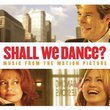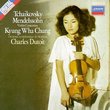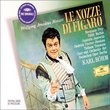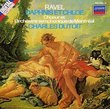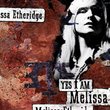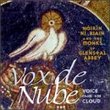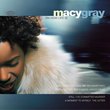| All Artists: piano Charles Ives Title: Ives Plays Ives The Complete Recordings of Charles Ives at the Piano, 1933-1943 Members Wishing: 3 Total Copies: 0 Label: New World Records Original Release Date: 4/1/2006 Release Date: 4/1/2006 Genres: Special Interest, Pop, Classical Styles: Marches, Vocal Pop, Chamber Music, Forms & Genres, Sonatas, Historical Periods, Classical (c.1770-1830), Modern, 20th, & 21st Century, Symphonies Number of Discs: 1 SwapaCD Credits: 1 UPC: 093228064220 |
Search - piano Charles Ives :: Ives Plays Ives The Complete Recordings of Charles Ives at the Piano, 1933-1943
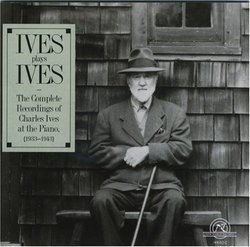 | piano Charles Ives Ives Plays Ives The Complete Recordings of Charles Ives at the Piano, 1933-1943 Genres: Special Interest, Pop, Classical
The invention of sound-recording devices late in the nineteenth century made possible the preservation of definitive performances played or led by some important composers of the first decades of the twentieth century. Elg... more » |
Larger Image |
CD DetailsSynopsis
Product Description The invention of sound-recording devices late in the nineteenth century made possible the preservation of definitive performances played or led by some important composers of the first decades of the twentieth century. Elgar, Rachmaninoff, Richard Strauss, and Stravinsky, among others, left a significant legacy of recordings of their own works. Charles Ives, however, did not approach recording in order to leave a legacy. At least at first, he simply wanted an opportunity to listen to some of his music with advantageous detachment (and possibly to shortcut supplying to Henry Cowell and others variants of his music). With virtually no performances of his important music occurring during the first two decades of the century, Ives certainly had a backlog of curiosity about the sound of his own compositional efforts, and the need to judge them as such. By 1933 Ives had retired from his insurance business and had largely finished writing his autobiographical Memos. He had heard some performances of his instrumental works (mostly in very disappointing efforts), but none of his piano works. While on an extended European vacation, he introduced himself to recording, at the Columbia Graphophone Company in London. Over the course of a decade that included four such sessions, Ives recorded seventeen different pieces, ranging from the early March No. 6 and rejected Largo for Symphony No. 1 to the ?improvisations? that indeed may have been freshly created in front of the microphone in 1938. But most of the music recorded?the Four Transcriptions from ?Emerson,? the Studies Nos. 2, 9, 11, and 23, and the ?Emerson? movement of Sonata No. 2 for Piano: Concord, Mass.?is related closely to Ives?s early, unfinished Emerson Overture for Piano and Orchestra (circa 1910?11). This reissue restores this historic recording, originally issued by CRI but unavailable for several years, to the catalogue. The booklet includes complete tracking information and extensive historical notes and documentation. Similar CDs
Similarly Requested CDs
|
CD ReviewsA producer's perspective David Gray Porter | Anaheim, California | 06/19/2008 (4 out of 5 stars) "53 of 53 people found the following review helpful: On January 2, 2000, I wrote of the first issue on CRI: Since I was one of the three engineers who worked on this album, I'd like to add some comments on how parts of this CD were produced and how its material was researched prior to production. Some of this music was released in 1974 as part of the Columbia Ives centenary album. Those cuts were chosen mostly by John Kirkpatrick and used analog tape transfers from 1960. For this CD, every recording that we have has been included, and with one exception all tracks are based on new DAT transfers made last year. In the 1974 release, two selections were assembled from four takes to make a more "listenable" product, with the overlaps deleted. Here, every track is separate and complete. Before we began any work on this album, Jim Sinclair and I spent many months identifying the specifics of the various takes. Ives recorded the same music in different ways over the years, sometimes adding new material, sometimes omitting it, sometimes substituting new passages for earlier passages and then abandoning them. All this was identified before we started studio production. A summary of all the recording's contents can be found in Jim's "Descriptive Catalogue of the Music of Charles Ives." The aluminum disks made at Ives' residence suffered from lowered pitch and needed to be sped up approximately 6%. Two later studio cuts have the same problem. One of them varied so widely in pitch that it was deemed proper for an attempt at manual correction. (Our theory is that an inattentive engineer of 1938 was absent-mindedly leaning against the lathe during recording.) Those who can compare the 1974 release of the "Largo" from Symphony No. 1 (incorrectly identified on the 1974 release as belonging to Symphony No. 2) and this CD release will be in for a big surprise. While there is still some "bend" in the pitch it is now quite stable and consistent (the result of my working four hours on this one track, twisting the pitch control knob on an open reel machine with my ear as my only guide as the track was transfered back to DAT, making it perhaps the most expensive two minutes in music history!). We did not attempt to eliminate all the skips from the soft aluminum disks. While this was possible, it was thought better to minimize the number skips to only one per event. Each was a skip backwards, so no material was lost. Those listeners with enough skill at using an open reel tape and a splicing block will easily be able to finish the project if they so wish. Frank Zappa had a term for putting the final "zest" into the performance of his music, "putting the eyebrows on it." Anyone who has seen Ives' piano music should hear for him- or herself how Ives put "the eyebrows" on the music of the Studies and their varied guises as cadenzas in the "Emerson" music ("Abolitionist Riot in Boston in [the 18]50s"), the "Alcotts" movement from "Concord," and his "War March" entitled "They Are There." The music as written is often merely a springboard for Ives' wild interpretive style. Other CDs of Ives' piano music I would recommend for comparative listening are Alan Mandel's pioneering set (now on Vox) of the "complete" piano music (unfortunately lacking the "Four Transcriptions from 'Emerson'"), Marc-Andre Hamelin's recording of "Concord" (the best I have heard to date), Daan Vandewalle's recording of "Concord" and some of the Studies, and Donald Berman's recording of the "Unknown Ives," which features premiere recordings and recordings of new editions, some bse on Ives' own recorded interpretations. " Charlie's own performances! Jeff Abell | Chicago, IL USA | 06/08/2008 (4 out of 5 stars) "One of the most significant recordings issued by CRI was this collection of Charles Ives performing his own music. Many thanks to New World for re-issuing this remarkable CD. Ives was a famous improviser, and a prodigious keyboard player, and the opportunity to hear him play his own works provides a phenomenal insight into this remarkable man and his unprecedented music. The audio engineers, faced with some scratchy old recordings, have done a fine job of removing as much surface noise as possible. (A vinyl issue of these recordings on Columbia in the 1970s sounded like it was mixed in a forest fire!) If the CD suffers in any way, it is from completeness: we get every take, including those where Charlie messes up, cursing under his breath. He was also inhibited by the short length of a 78 rpm disc, so we get fragments of some works. But this CD is worth buying for the performance of the song "They Are There!" with the composer singing and playing, and for his astonishing performance of the Alcotts movement from his Concord Sonata. I own 4 other versions of that piece, but Ives' own performance is luminous."
|

 Track Listings (42) - Disc #1
Track Listings (42) - Disc #1

![Ain't no punshline when he's gone [Single-CD]](https://nationalbookswap.com/cd//m/27/9927/1409927.jpg)

